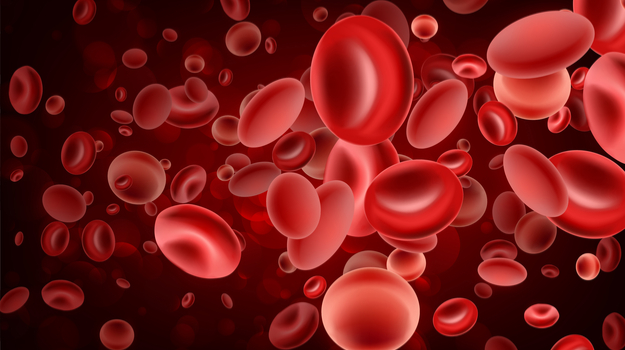Leukemia, a type of cancer that begins in the body's blood-forming tissues, primarily affects the white blood cells. Characterized by abnormal proliferation of these cells, leukemia interferes with the body's ability to fight infections. It's a complex disease varying widely in its presentation and progression, and its impact is felt deeply by patients and their families.
As a life-threatening illness, the importance of advancements in leukemia therapy cannot be overstated. These advancements offer an improved quality of life for patients and foster hope by increasing survival rates. They present an opportunity to shift the narrative from managing a chronic condition to potentially curative outcomes. This document delves into these groundbreaking strides in leukemia treatment, marking a new era of hope for those affected by this disease.
Traditional forms of leukemia therapy primarily include chemotherapy, radiation therapy, and stem cell transplants. Each approach comes with its limitations and side effects.
● Chemotherapy, the most common treatment for leukemia, uses potent drugs to kill or slow the growth of cancer cells. However, it also affects healthy cells, leading to side effects like fatigue, nausea, hair loss, and an increased risk of infection.
● Radiation therapy utilizes high-energy radiation to kill cancer cells. This treatment can be highly effective but can also damage healthy cells near the treatment area. Potential side effects extend from skin changes and fatigue to more serious issues, such as fertility problems, depending on the size being treated.
● Stem cell transplantation involves replacing the patient's unhealthy bone marrow (the source of leukemia cells) with healthy bone marrow stem cells. While this approach can be highly effective, it's often reserved for severe cases due to the high risk of complications, including infections and graft-versus-host disease, where the transplanted cells attack the patient's body.
Despite these treatments being indispensable in the fight against leukemia, their limitations and side effects underscore the necessity for advancing and improving leukemia therapies.
In recent years, a wave of innovation has heralded a new era in leukemia treatment. The advent of targeted therapies and immunotherapies has revolutionized our understanding of leukemia and given rise to more effective and tolerable treatments. Dr Mohamed Basel Aswad
Targeted therapies interfere with specific molecules necessary for the tumor's growth and progression. These therapies specifically target cancer cells, reducing damage to healthy cells. This precision approach results in fewer side effects and better patient outcomes.
Immunotherapies, on the other hand, utilize the power of the patient's immune system to fight cancer. These advanced treatments work by stimulating or enhancing the immune system’s response to cancer cells, leading to their destruction.
Together, these innovative treatments represent a significant stride forward in leukemia therapy, bringing renewed hope and optimism to patients and their loved ones.
Targeted therapies represent a new frontier in leukemia treatment. These treatments work by identifying specific genes, proteins, or other molecules associated with leukemia cells, thereby interfering with the cancer cell's ability to grow and divide. This precise approach limits collateral damage to healthy cells, resulting in fewer side effects and more effective treatment.
One of the latest targeted therapies for leukemia is the class of drugs known as tyrosine kinase inhibitors (TKIs), such as Imatinib. TKIs block the enzyme tyrosine kinase, which leukemia cells use for growth and division. Another promising targeted therapy is Venetoclax, which targets a protein called BCL-2 that helps cancer cells survive longer than they should. By inhibiting this protein, Venetoclax can induce cancer cell death. These advances in targeted therapy illustrate the significant progress made in leukemia treatment, offering hope for improved patient outcomes. Dr Mohamed Basel Aswad
Immunotherapies represent a paradigm shift in leukemia treatment, leveraging the body's immune system to combat the disease. This treatment modality works by stimulating the patient's immune system to work harder or smarter to attack cancer cells or by introducing artificial immune system proteins to enhance the body's cancer-fighting capabilities.
One of the most recent breakthroughs in immunotherapy for leukemia is the advent of Chimeric Antigen Receptor T-cell (CAR-T) therapy. This revolutionary approach involves genetically modifying a patient’s T cells — a type of immune cell — to create special receptors on their surface. These receptors, called CARs, allow the T cells to recognize and attack specific proteins in cancer cells. This 're-engineered' army of T cells is then infused back into the patient to find and destroy cancer cells throughout the body. CAR-T therapy has demonstrated remarkable results in some patients with certain types of leukemia, marking a significant milestone in leukemia therapy.
Research in leukemia continues to evolve rapidly, bringing us closer to a future where leukemia is a manageable, if not curable, disease. Scientists are continually exploring newer, more effective targeted therapies and immunotherapies and combining these with traditional treatments to enhance effectiveness. The emerging field of gene therapy offers yet another promising avenue with the potential to correct genetic mutations that lead to leukemia. With the increased understanding of leukemia's genetic and molecular landscape, personalized medicine, where treatment is tailored based on the individual patient's genetic makeup, is becoming a reality.
In conclusion, the landscape of leukemia treatment has drastically changed over the years. It continues, bringing us into a new era of hope for patients and their families. The advances in targeted therapies, immunotherapies, and the potential of gene therapy have improved patient outcomes and fundamentally changed how we perceive and approach leukemia. While we acknowledge the journey is far from over, there is renewed optimism underpinned by the incredible advances in our understanding and treatment of the disease. To those affected by leukemia, this new era of hope brings with it the promise of more tomorrows, more milestones, and more moments cherished with loved ones. Remember, every day brings us one step closer to a world free from the shackles of leukemia.





Comments